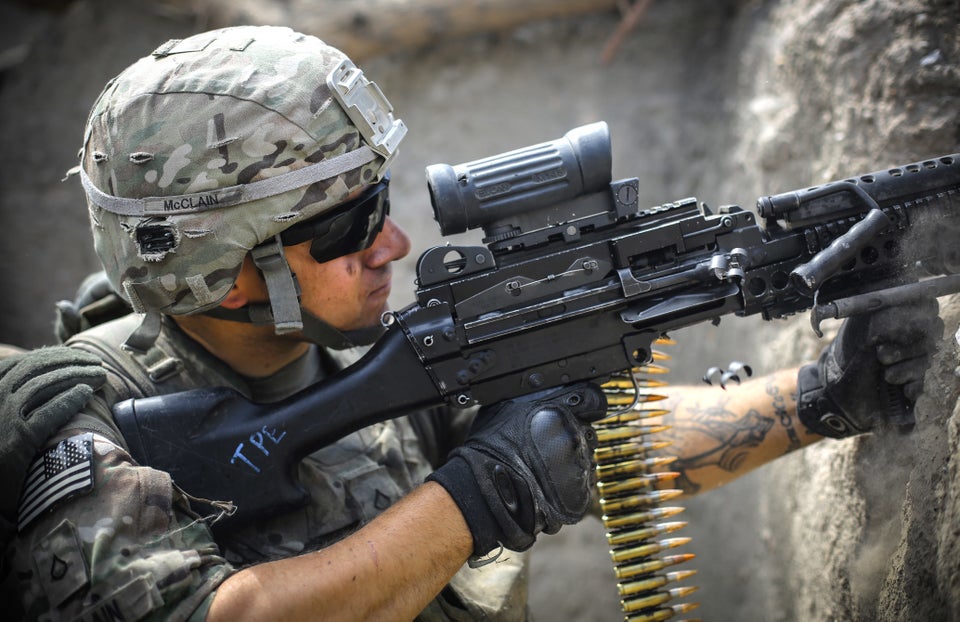
PADUCAH, Ky. -- Despite extensive warnings from the Obama administration over the effects of sequestration budget cuts on air traffic control staff, the practical impact of layoffs at the Federal Aviation Administration is likely to be minor, according to airport officials.
The cuts will likely lead to some inconveniences, and airport officials say they strongly prefer to keep their air traffic control towers functioning. But airports will not have to shut down, and the sequester is unlikely to spark lengthy delays on its own.
"We will be able to function without new delays," said Gertrude Roof, manager of Barkley Regional Airport, which is likely to operate for a time without its air traffic control tower. "We'd obviously rather have our tower, but we operated without one for years during the '80s."
While Barkley's tower provides added safety precautions and more convenient operations for the airport outside of Paducah, Ky., its essential functions can be rerouted through the airport at Memphis, Tenn., about 75 miles away, Roof said.
Barkley has a very low traffic volume, even for a regional airport, offering just two flights a day to Chicago, and two flights in from the same city. But larger airports fielding more than 150 flights a day, like Bowman Field in Louisville, Ky., also expect to weather the cuts without much delay.
Bowman handles smaller corporate aircraft and flight school training sessions, explained Trish Burke, spokeswoman for Louisville Regional Airport Authority. She said the airport already operates without a control tower from 10 p.m. to 7 a.m., and added that the loss of the tower would not pose a safety risk. "Pilots follow these procedures all over the country in non-towered environments," she explained. "They are used to following it at Bowman."
Sequestration's other effects are likely to be more severe. Sucking $85 billion in spending out of the economy will hamper the economic recovery and significantly increase the chances that the U.S. will dip back into recession. Cutting anti-poverty programs that make up only a tiny percentage of the federal budget will be devastating for low-income families.
But the Obama administration's repeated warnings about the effects of these cuts on airports do not match the expectations of airport personnel. A gap between the administration's rhetoric and the practical reality could undermine other more credible claims about sequestration's overall impact on the economy.
Last week, the Federal Aviation Administration released a list of over 200 air traffic control towers that may have to be shuttered if sequestration is fully implemented. The FAA can't meet its current staffing levels if the sequestration cuts are implemented, making furloughs and layoffs a certainty that airports would like to avoid.
Those furloughs and layoffs will prevent some towers from operating during all of their current shifts, and in some cases, towers will have to be closed altogether. But losing an air traffic control tower will not dramatically disrupt air travel for many small and mid-sized airports. Some flights may have to have more space between them, but operations should continue to be broadly unaffected. When President Ronald Reagan abruptly fired nearly all of the nation's air traffic controllers in 1981 to break a strike, flight travel was initially significantly disrupted, but many smaller airports shifted their operations to function without control towers, and were able to function for years without them.
Passengers may see greater impact at airports from cuts to the Transportation Security Administration, which issued a statement on Monday saying that "travelers can expect to see lines and wait times increase as reductions to overtime and the inability to backfill positions for attrition begin to occur this month." The TSA went on to write: "while wait times can vary on a number of factors, due to the reductions mandated by sequestration, TSA will put in place a hiring freeze, which will result in up to an additional 1,000 TSO vacancies by Memorial Day Weekend and up to 2,600 vacancies by the end of the fiscal year."
The agency added that during busy travel periods, wait times could double at the larger airports for those already waiting 30 to 40 minutes. Others expecting minimal wait times at less busy airports could now find themselves in a half-hour long wait.
Some international flights have been delayed as well. In a statement, U.S. Customs and Border Protection reported that during the first morning of sequestration, it experienced "spikes in wait times at the top two international gateway airports." The extended wait times were due to reductions in staffing, the agency reported.
"At John F. Kennedy International Airport (JFK) in New York, CBP had approximately 56 flights with wait times in excess of 2 hours, and 14 flights over 3 hours," CBP explained in its statement. "Miami International Airport (MIA) reported 51 flights over 2 hours, and 4 flights approached/exceeded 3 hours.
"These wait times are not typical for this time period, and are related to decreased booth staffing."
Along with a hiring freeze, the border patrol agency expects furlough notices to go out on March 7.
